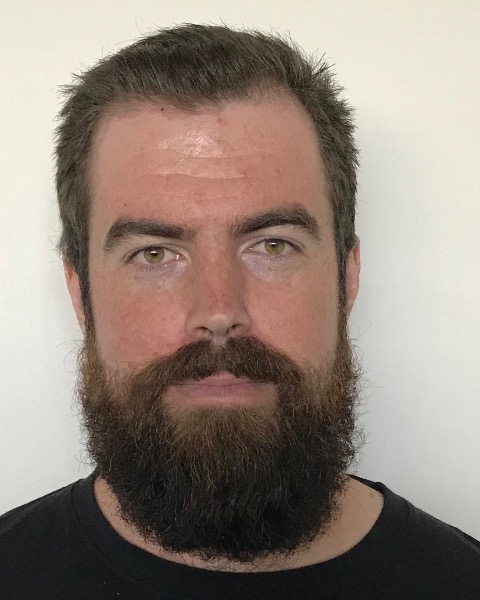Resistance Training/Periodization
(8) Priming: Influence of set-configuration on delayed neuromuscular and physical performance


Kristina L. Kendall, PhD, CSCS (she/her/hers)
Senior Lecturer
Edith Cowan University
Scarborough, Western Australia, Australia- MS
Mark Scanlan
Lecturer
Edith Cowan University
Joondalup, Western Australia, Australia - JT
Janet Taylor
Adjunct Professor
Edith Cowan University
Sydney, New South Wales, Australia 
Stuart N. Guppy, MSc
Lecturer
Edith Cowan University
Joondalup, Western Australia, Australia- GH
Gregory Greg. Haff, Ph.D., C.S.C.S.*D, FNSCA, ASCC
Professor of Strength and Conditioning
Edith Cowan University
Joondalup, Western Australia, Australia 
Christopher Latella, PhD
Lecturer
Edith Cowan University
Heathridge, Western Australia, Australia
Poster Presenter(s)
Author(s)
Purpose: Resistance training protocols eliciting the best priming response are not yet known. Cluster set protocols may be beneficial due to fatigue minimization and maintenance of force and power output. The purpose of the study was to compare the effects of set configuration (traditional or cluster sets) or no exercise (control) on the time-course and magnitude of the priming effect on measures of maximal neuromuscular performance in resistance-trained individuals.
Methods: Eleven participants (n=11; age:27.1±4.6 y, body mass:81.9±19.7 kg, relative squat 1RM:1.4±0.2 kg/bw; volunteered for this study. Participants completed 3x5 back squats at 80%1RM in a traditional (TRAD: 180s inter-set rest) and cluster set (CLUS: additional 15s inter-repetition rest) format, or no exercise (CONT) on separate days. Changes in countermovement (CMJ) and static jump (SJ) height, isometric mid-thigh pull (IMTP) peak force (PF), maximal voluntary isometric contraction (MVIC) force, voluntary activation (VA), and twitch force (TF) were assessed pre, 6- and 24-hours post-exercise. Repeated measures ANOVAs were used to assess changes in performance variables across the three time points and between the different conditions. Additionally, Hedge’s g effect sizes explored pre-to-post and between condition effects, and were classified as ≥0.2:small, ≥0.5:medium, ≥0.5:large.
Results: There were no statistically significant interactions for any outcome variables (p >0.05). PF improved at 6 hours (7.0±12.0%, g=0.54) and 24 hours (11.5±18.5%, g=0.57) in the CLUS condition compared to TRAD (0.7±8.5%, g=0.07 and 3.1±9.2%, g=0.32) and CONT (-3.8±12.1%, g=-0.29 and 4.5±16.0%, g=-0.30) at 6 and 24 hours, respectively. SJ decreased at both 6 (1.3±4.7%, g=-0.25) and 24 hours (-2.9±5.7%, g=-0.48) in the CLUS condition; whereas it remained stable at 6 hours in both the TRAD and CONT conditions and decreased (-2.3% to -2.6%, g=-0.34) at the 24-hour mark. CMJ increased ~2% to 3% across all conditions at the 6-hour time point but returned to baseline for the both the CLUS and TRAD conditions at 24 hours. CMJ increased slightly at the 24-hour time point for the CONT condition (3.5±6.1%, g=0.54). MVIC showed an improvement at 6 hours (3.8±11.7%, g=0.30) for the CLUS condition; however, MVIC decreased by 3.1±9.5% (g=-0.30) compared to baseline at 24 hours. MVIC remained stable across all timepoints for the TRAD condition and decreased at both 6 hours (-4.5±12.0%, g=-0.34) and 24 hours (-2.2±11.6%, g=-0.18) in the CONT condition. A small improvement in TF was noted for the CLUS condition (4.1±9.2%, g=0.41) whereas TF decreased in the CONT condition (-4.2±8.5%, g=-0.46) at 24 hours. VA remained relatively stable across all time points for each condition. CONCLUSIONS:The application of traditional and cluster set priming protocols exhibited no significant effects on maximal neuromuscular performance. Despite subtle improvements in some measures (IMTP PF, MVIC, and TF), a contrasting decrease in jump height following the cluster set protocol suggests potential task specificity in delayed priming effects. PRACTICAL APPLICATIONS:Inter-repetition rest priming protocols offer no clear benefit at this stage. Other cluster set protocols that avoid un-racking/re-racking every repetition may be more feasible. Further investigations are warranted to elucidate the intricate interplay of these factors and enhance our understanding of optimal priming strategies in neuromuscular performance contexts.
Acknowledgements: This project was funded by an NSCA Foundation Senior Investigator grant.
